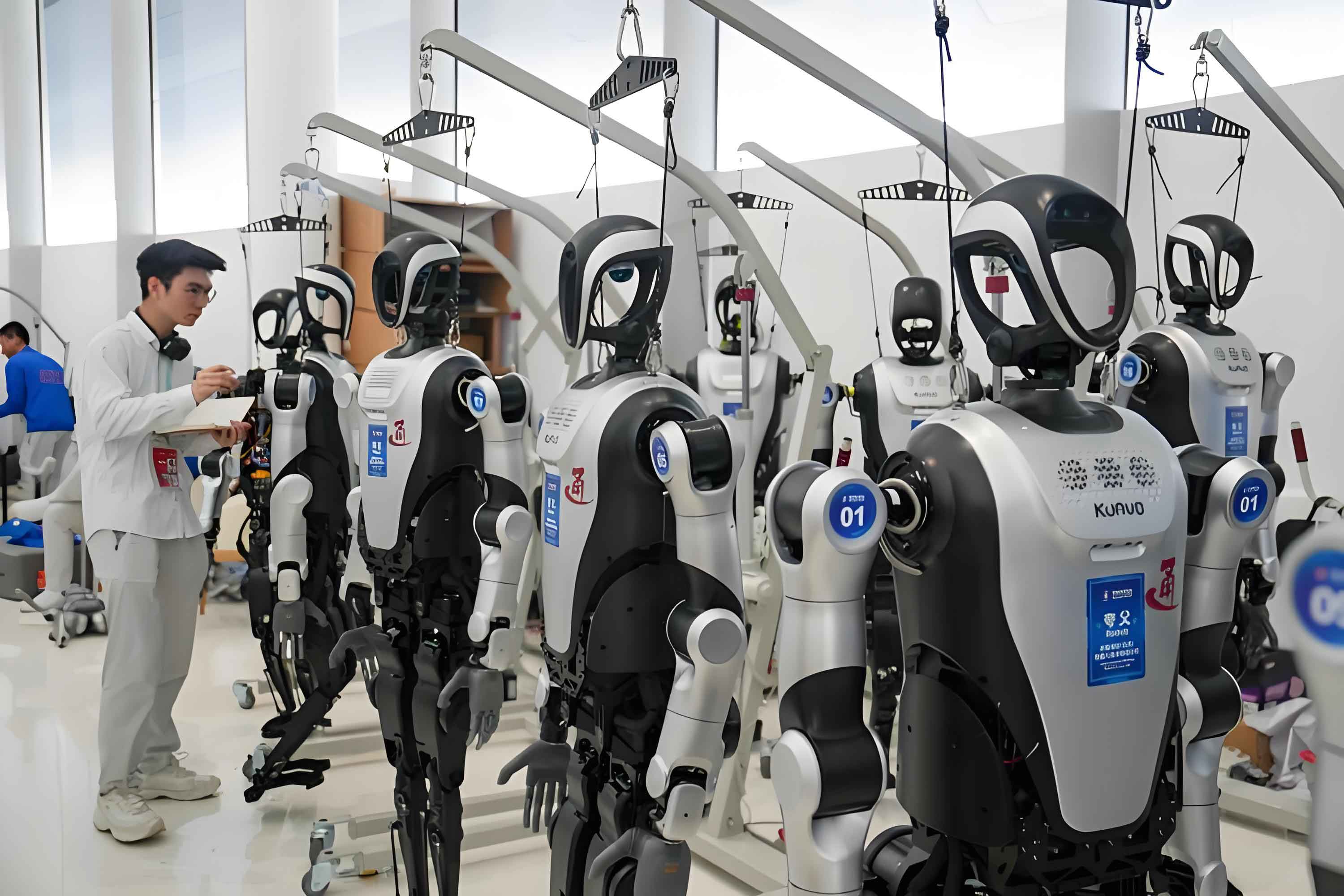Global manufacturing timelines for humanoid robots are compressing dramatically, with industry sources indicating that key production phases—once projected to span quarters—are now achievable within hours. This acceleration coincides with unprecedented capital inflows into the sector, evidenced by China’s humanoid robot stock index soaring over 200% since mid-2024. Supply chain data reveals critical components like planetary roller screws (19% of value) and torque motors (16%) are driving innovation, while sensors and AI integration rates approach 70%.

Production Breakthroughs: From Months to Hours
Insiders confirm that assembly milestones for humanoid robots, previously requiring 3–4 months, are now being completed in 1–4 hours for specific modules. This leap stems from advanced automation in precision component manufacturing. For example, harmonic reducers (13% of value) and force sensors (11%) now undergo AI-validated quality checks in real time, slashing error margins below 0.01%. One engineer revealed, “What took a quarter now happens before lunch.”
Investment Frenzy: Decoding the Numbers
The humanoid robot index’s meteoric rise—from 4,000 to 12,000 points in under six months—signals structural confidence. Fund managers attribute this to three factors:
- Supply Chain Maturity: Component costs dropped 40% year-over-year as motors, sensors, and actuators scaled.
- AI Integration: Systems achieving 69.45% autonomous operation unlocked warehouse/logistics deployments.
- Policy Tailwinds: Over 30 countries now subsidize humanoid robot adoption for eldercare and hazardous industries.
Notably, “hidden” components (31% of value) like micro-hydrolics and self-healing circuits are emerging as new investment hotspots.
The Core Tech Arms Race
Precision Mechanics: Planetary roller screws—critical for joint flexibility—now endure 10 million+ load cycles, up 300% since 2024. Manufacturers are stockpiling tungsten alloys to meet demand.
Actuation Systems: Hollow-cup motors (8%) enable facial expression replication, while torque motors allow 50kg payloads. New magnesium composites reduce weight by 60%.
AI Convergence: Sensor fusion (force, inertial, vision) achieves sub-100ms response times. “The nervous system is live,” noted a lab director, citing trials where humanoid robots navigated construction sites during earthquakes.
Global Implications
Labor economists warn of 12 million logistics jobs at risk by 2027, but productivity gains are undeniable:
- Automotive plants using humanoid robots report 130% faster production lines.
- Offshore wind farms deploy them for turbine repairs, cutting downtime by 85%.
Militaries are discreetly testing endurance; prototypes now operate 72 hours underwater.
The Road Ahead
With humanoid robot prototypes slated for mass production in Q1 2026, industry valuations could triple. Component innovators remain the prime investment targets—particularly motor and sensor firms. As one CEO stated, “This isn’t automation; it’s evolution.” Regulatory clarity on AI ethics remains the final hurdle, but capital is betting billions that humanoid robots will soon walk among us—and work beside us.